I took a children’s literature class in college. It was a bit of a departure from my typical Shakespeare and Russian literature type subject matter. I chose it as a relief from some of those heavier texts and deep down I probably thought it would be easy. I mean it’s children’s literature. I’d assumed I wouldn’t need to write a paper similar to how the misogynistic undertones of George Bernard Shaw’s Heartbreak House still formulate a microcosm for current societal expectations.
Pies and Surprise
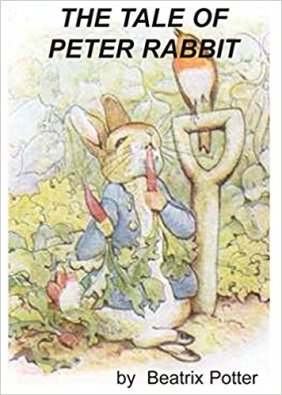 To say I was surprised by the class would be an understatement. I learned very quickly that children’s literature isn’t all cute animals and funny incidents.
To say I was surprised by the class would be an understatement. I learned very quickly that children’s literature isn’t all cute animals and funny incidents.
Let’s take Beatrix Potter’s The Tale of Peter Rabbit. It’s a classic, published back in 1902 and read by many still to this day. If you believe the lighthearted description on Amazon, it sounds cute and innocent. “It tells the story of a very mischievous rabbit and the trouble he encounters in Mr McGregor’s vegetable garden.”
But there are some very adult undertones in this book. It’s a story about survival in a world where in many ways you have no control over the things around you. It’s a world where your father could get caught and baked into a pie. That’s not so cute and innocent. Potter uses adorable animals to elucidate adult themes of loss and hardship.
College taught me a lot of things. One of them being, don’t underestimate the literary prowess of children’s literature.
It’s Not Just for Kids
While I learned this lesson about children’s literature in my late teens, not everyone is so inclined to fill their college years reading and dissecting books. I was lucky enough to be able to do that. My husband did not. He was a math major. He parsed out nuances of algebraic equations not allegories. Therefore, I shouldn’t have been surprised when he once turned up his nose at a book I was reading because it was “for kids.”
He’s not alone. Many adults even look down on the closer genre of young adult books as lesser somehow than books written for a true adult audience.
However, I take issue with this.
Changing the Way People View Kid Lit
In fact, in some ways, I think children’s literature can be far more compelling than adult literature. While most books include some degree of change and growth, this theme isn’t just a perfunctory requirement in children’s literature, it’s a bedrock of the genre.
Change is a natural topic given childhood itself is filled with constant evolution. However, once we reach adulthood, our evolution often slows and our reading options in many ways reflect this. Adults get stuck in their ways. Many don’t want to learn or grow or change.
There’s also a stigma associated with adults reading children’s literature. It’s a stigma in general that adults feel they can’t learn from children. I think this is also false. I learn from my daughter every day. She’s taught me more about life and changed how I approach the world probably more than any other person.
I think we adults shouldn’t be so quick to dismiss children’s literature. And, if you’re an adult interested in seeing if I’m right, here are some suggestions for children’s literature that I think are just as good as anything written for adults.
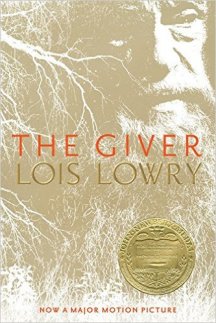 The Giver by Lois Lowry
The Giver by Lois Lowry
Lois Lowry weaves a tale about twelve-year-old Jonas, who lives in a seemingly ideal, if colorless, world of conformity and contentment. That is until he is given his life assignment as the Receiver of Memory does he begin to understand the dark, complex secrets behind his fragile community.
This is one of the best dystopic novels I’ve ever read. It will entertain and enlighten no matter the age of the reader.
Brown Girl Dreaming by Jacqueline Woodson
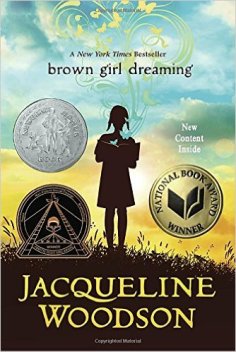 Raised in South Carolina and New York, Woodson always felt halfway home in each place. In vivid poems, she shares what it was like to grow up as an African American in the 1960s and 1970s, living with the remnants of Jim Crow and her growing awareness of the Civil Rights movement. Touching and powerful, each poem is both accessible and emotionally charged, each line a glimpse into a child’s soul as she searches for her place in the world. Woodson’s eloquent poetry also reflects the joy of finding her voice through writing stories, despite the fact that she struggled with reading as a child. Her love of stories inspired her and stayed with her, creating the first sparks of the gifted writer she was to become.
Raised in South Carolina and New York, Woodson always felt halfway home in each place. In vivid poems, she shares what it was like to grow up as an African American in the 1960s and 1970s, living with the remnants of Jim Crow and her growing awareness of the Civil Rights movement. Touching and powerful, each poem is both accessible and emotionally charged, each line a glimpse into a child’s soul as she searches for her place in the world. Woodson’s eloquent poetry also reflects the joy of finding her voice through writing stories, despite the fact that she struggled with reading as a child. Her love of stories inspired her and stayed with her, creating the first sparks of the gifted writer she was to become.
This book of poetry is accessible and beautiful. People young and old who don’t think they like poetry will be moved by Woodson’s words.
Harry Potter by J. K. Rowling
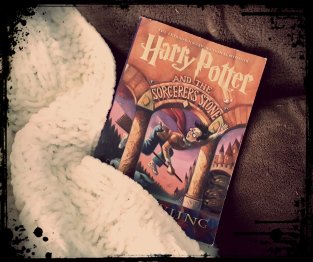 I think I have a friend or two who might stop talking to me if I did not put Harry Potter on this list. Although I am not a Potterhead (I’m still stuck on the third book), I can’t discount it’s appeal to all audiences big and small. It’s probably one of the best examples of children’s literature that’s transcended across so many different ages and people.
I think I have a friend or two who might stop talking to me if I did not put Harry Potter on this list. Although I am not a Potterhead (I’m still stuck on the third book), I can’t discount it’s appeal to all audiences big and small. It’s probably one of the best examples of children’s literature that’s transcended across so many different ages and people.
In case you somehow don’t know the story, it’s about a young boy, Harry Potter, who finds out he is really a wizard and is summoned to attend an (in)famous school for wizards, where he begins to discover some clues about his illustrious birthright.
The Phantom Tollbooth by Norton Juster
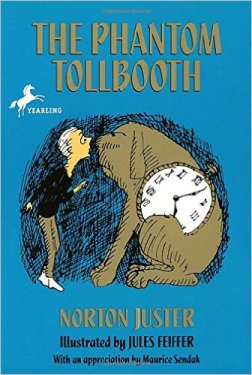 For Milo, everything’s a bore. When a tollbooth mysteriously appears in his room, he drives through only because he’s got nothing better to do. But on the other side, things seem different. Milo visits the Island of Conclusions (you get there by jumping), learns about time from a ticking watchdog named Tock, and even embarks on a quest to rescue Rhyme and Reason! Somewhere along the way, Milo realizes something astonishing. Life is far from dull. In fact, it’s exciting beyond his wildest dreams. . . .
For Milo, everything’s a bore. When a tollbooth mysteriously appears in his room, he drives through only because he’s got nothing better to do. But on the other side, things seem different. Milo visits the Island of Conclusions (you get there by jumping), learns about time from a ticking watchdog named Tock, and even embarks on a quest to rescue Rhyme and Reason! Somewhere along the way, Milo realizes something astonishing. Life is far from dull. In fact, it’s exciting beyond his wildest dreams. . . .
This book is so filled with wit and humor, it’s like the movie Toy Story, adults and kids alike can find something interesting about this book. It’s also a book that will make you think on a different kind of level.











July 26, 2017 at 10:13 am
This is such a great post! Children’s literature lays the foundation for a lot of life lessons and I think it is important that adults continue to read these books, understand them and talk to kids about them.
LikeLiked by 1 person
July 26, 2017 at 10:20 am
Thanks! I agree wholeheartedly!!
LikeLiked by 1 person
July 26, 2017 at 10:40 am
Agree absolutely!
Most of my reading of child lit, since I became an adult, is because I have kids, and am homeschooling the youngest. However, I have discovered some wonderful books for myself in the process.
The sole reason I read Harry Potter to start with was that my then teenage son was reading it. Fifteen years later, he and I still talk about those books, and how the movies fared against the books. We did the same with The Giver that I just read last year.
Great post!
LikeLiked by 1 person
July 26, 2017 at 8:12 pm
Thanks for sharing! I love children’s literature- there’s so many wonderful stories available. If I may suggest another book, I’ve been reading historical fiction and found the ‘grown-up’ books a bit depressing. Then I discovered the book CHAINS by Laurie Halse Anderson. It deals with slavery during the American Revolutionary War, and had me bawling like a baby halfway through 🙂 Now to get books 2 and 3…:)
LikeLiked by 1 person
July 27, 2017 at 11:38 am
I’ve heard of that book. I love recommendations. I’m putting it on my list!
LikeLiked by 1 person
July 27, 2017 at 8:16 am
Great post!! Agree with The Giver 100%!!
LikeLiked by 1 person
July 27, 2017 at 11:40 am
I know I love that book so much! I read it to my daughter when she was 8 or 9 so we could talk about it together. We had such a great conversation. And it was actually the first book we read in my children’s lit course in college. Clearly it stuck with me.
LikeLike